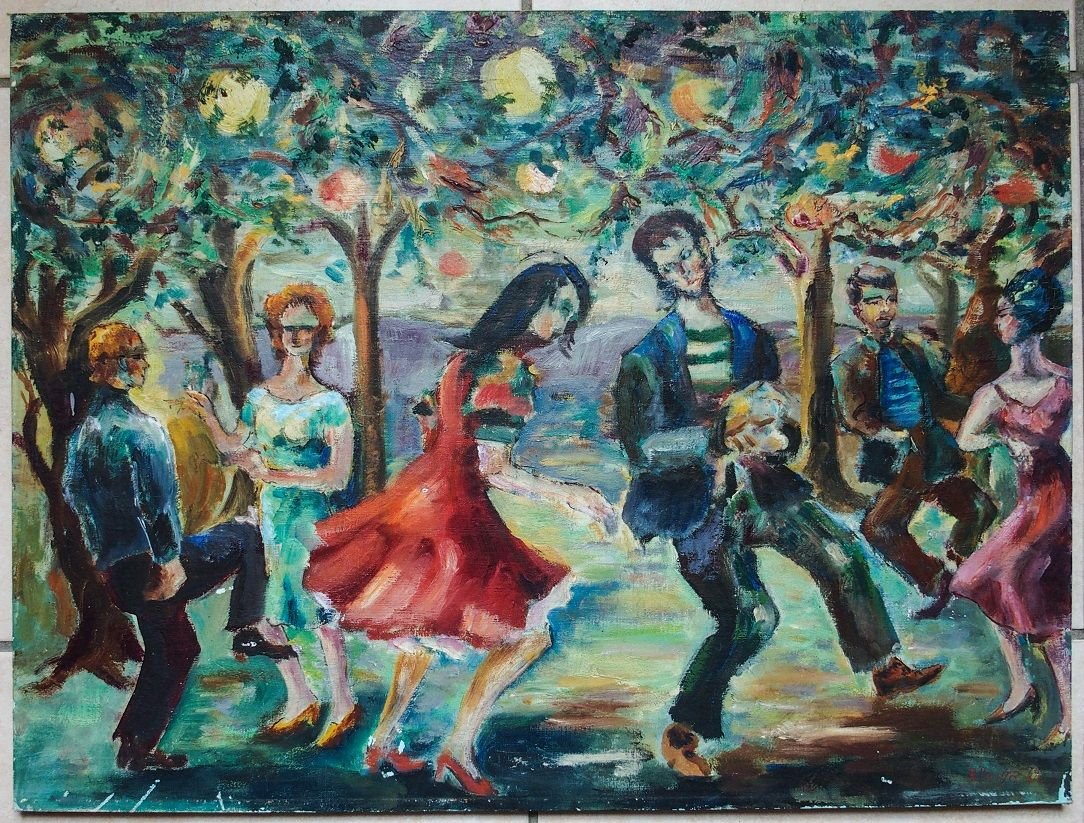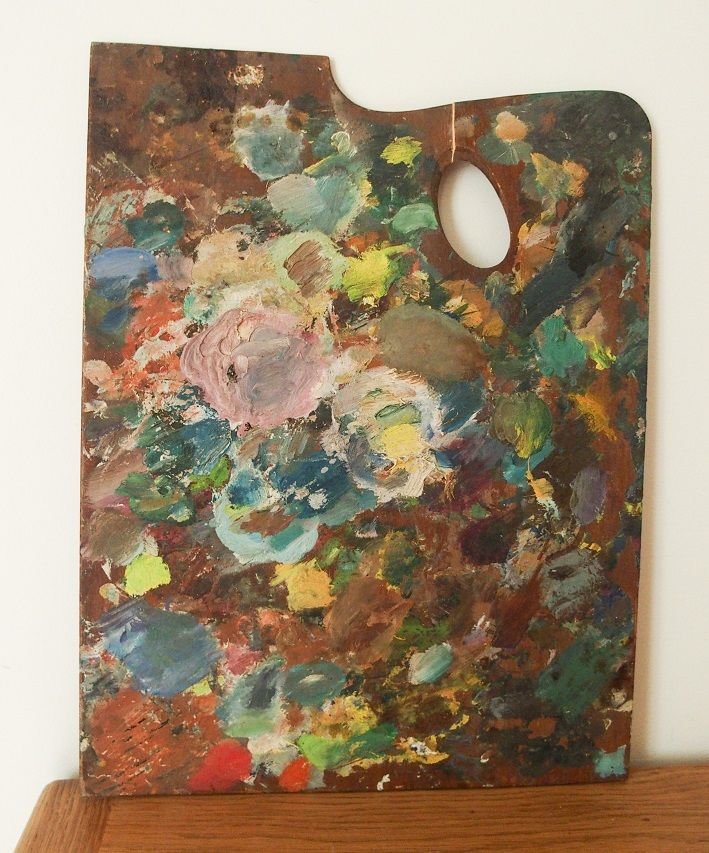My great-grandfather was born in 1894 into a bourgeois family where drawing was a part of the rigorous education he received. His life became somewhat difficult as, like most men growing up during these times, he was sent to fight in the First World War from 1914 to 1918 as a "poilu" (name given to infantry soldiers in the French army). And later the Second World War (1939 - 1945), which he fought after being forced to abandon his hotel/restaurant in Creil (North of Paris) as the Germans had requisitioned him. He then found himself on the demarcation line in Burgundy and became a farmer in order to meet the needs of his family.
One day I will tell you more about his life as it is definitely worth sharing bits and pieces of his journey.
When he retired, he found his drawing pencils again, taught himself the methods of watercolor and oil painting, and began to draw and paint. I should say "amongst others" because he also loved photography, literature, philosophy, going on long nature walks, sociology, politics and so much more. To this creative personality must be added an authoritarian and sometimes violent nature which were the results, according to the family, of the physical and psychological wounds he had experienced during World War 1.
The drawings and paintings that follow reflect in three different categories the style of his works.
Watercolors
_edited.jpg)
The young couple seem too well dressed to go to work. I imagine they are on their way to the village party, while the old man to their right, grumbles at the sight of the younger generation always thinking about dancing and having fun -
or maybe he's just tired and needs a break from walking.
) | ) |
|---|

Drawings

Two men are changing/fixing a horseshoe while his owner, leaning on a stick or cane on the right, keeps a close watch. My guess is that he is a rich farmer because he seems to be well dressed, yet wears the traditional clogs most farmers wore at the time.
Behind the horse, you can see the smoke coming from the heated wrought iron of the forge, as well as an anvil. The woman and children in the front may simply be onlookers from the village who, on their way to the market, have stopped by to watch the men at work.

Oil on canvas


This is a scene from "Le bal du 14 juillet" - a traditional ball organized in cities, towns and villages all over France to celebrate our National Day on the 14th of July.
Painted in the 60's, you can see the new trend which had recently emerged in the dancing scene worldwide. These couples are most likely "jerking" or "twisting" - a new style of solo dancing originating from the USA, which was all the craze in France.
To the left is his painting palette which has picked up a lot of dust over the years.
My great-grandfather was not rich and buying a canvas to paint on was expensive, so he often painted on hardboard or masonite - a product of wood processed under high pressure. These panels most commonly had a smooth surface and, on the other side, a more structured surface. He would usually paint on the structured surface which he liked as it provided a similar impression to painting on canvas. The down side to this was that it was of darker wood color which explains why all of his oil paintings are found to be very dark.
Funny anecdote:
My great-grandfather painted a portrait of a woman on the wall of his workshop. Much later, when my parents renovated the house, my mom took a photo of this portrait and the workers placed plasterboard in front. This portrait is still on the wall behind the plasterboard, hidden in the dark for future generations to find.

 Les peintures de mon arriere-grand-pere |  FOOD - nom nom nom |
|---|---|
My mom's on STEEMIT! |  Winter Wonderland 2 |
“Learning is not a race for information, it is a walk of discovery” - Jane Healy

